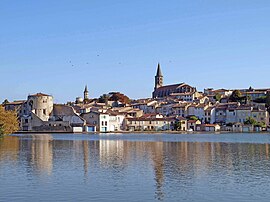Castelnaudary
Castelnaudary (French: [kastɛlnodɑʁi] ⓘ; Occitan: Castèlnòu d'Arri) is a commune in the Aude department in the Occitanie region of southern France. It is located in the former province of the Lauragais and famous for cassoulet of which it claims to be the world capital, and of which it is a major producer.
You can help expand this article with text translated from the corresponding article in French. (December 2008) Click [show] for important translation instructions.
|
This article includes a list of general references, but it lacks sufficient corresponding inline citations. (June 2012) |




